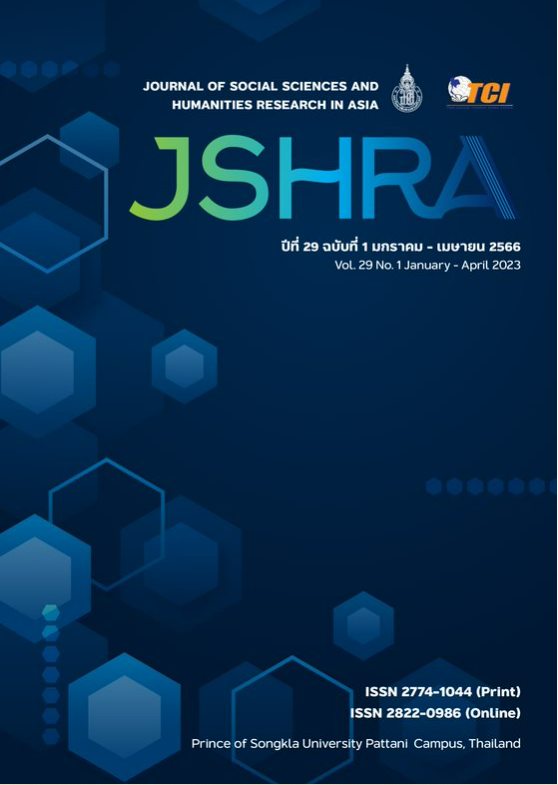Building “Buddha Governance” for Temple Administration in an Era of Change
Keywords:
Administration, Buddha Governance, Change, TempleAbstract
"Buddha Governance" is a principle of temple management to help Buddhist temples operate in compliance with the new world system. "Buddha Governance" was developed and adapted from the good govemance and the Dhamma principles to comprise: 1) the Rule of Law 2) Morality 3) Accountability 4) Participation 5) Responsibility 6) Cost-effectiveness 7) the Sappurisadhamma VII (the 7 guidelines for being a good person) the Brahmavihara IV (the 4 guidelines for ad ministrators) 9) the lddhipada IV (the 4 guidelines for successful accomplishment), and 10) the Sangkhahavatthu IV (the 4 principles of amicability). This approach can promote the original foundational objectives of the temple while keeping pace with a changing world. Thus, this article aims to present a model for enhancing the temple administration in changing society that combines new era organizational administration with traditional Buddhist principles through the disciplines and the good governance for more-reliable temple management.
References
Bureekul, T., Chatchawanthipakorn, V., Wattanasap, W., Prachyapruit, T., Siroros, P., Tamronglak, A …Singhanat, B. (2009). Dhosa Dharma: Indicators of good governance. Bangkok: King Prajadhipok's Institute.
Bureekul, T. (2015). Good governance: The important machinery reform for state development. In Tanchai, W., Kokpol, O., Jaiman, T., & Atchariyapanya, P. (Eds.). Balance of power in Thai politics and government (pp. 239-261). Bangkok: King Prajadhipok's Institute.
Chaijaroenwatana, B., & Lee, B. (2001). Indicators of good governance. Bangkok: King Prajadhipok's Institute.
Chansom, N. (2014). Buddhist Thai temples’ financial management: The congruence of good governance principles. NIDA Development Journal, 54(1), 107-141.
Chongsomchai, C., & Chopyot, S. (2019). Governance and local administration: Problem condition and driven process. Mahasarakham: College of Politics and Governance, Mahasarakham University.
Klinrumpeung, K. (2018). The problem to check and screening person before ordination. Bangkok: The Secretariat of the House of Representatives.
National Office of Buddhism. (2022). Number of temples. Retrieved January 20, 2023, from http://binfo.onab.go.th/Temple/Dashboard.aspx
National Office of Buddhism. (2022). Work and authority. Retrieved November 4, 2022, from https://www.onab.go.th/th/content/page/index/id/3
Nuchcharean, V. (2022, June 11). Temple management of Thailand in digital disruption (2). Bangkokbiznews. Retrieved October 11, 2022, from https://www.bangkokbiznews.com/business/1009359
Phramaha Amorn Mahalapho. (2018). Ten royal virtues of the king for current Thai Governance. The Journal of Institute of Trainner Monk Development, 1(2), 93-105.
Phrasrisittivites (Thawatchai Roslers), & Phramaha Mit Thitapanyo. (2020). The evolution of temples in Buddhism. Journal of Graduate MCU KhonKaen Campus, 7(3), 74-85.
Sangchan, S. (2015). Loosen the knot of the Buddhist monastic education of Thailand. Retrieved November 4, 2022, from https://www.tcijthai.com/news/2015/05/scoop/5665
Sanseera, W. (2009). Sangha act and Buddhism protection in current situation. Julaniti, 6(4), 131-138. https://senate.go.th/assets/portals/93/fileups/272/files/S%E0%B9%88ub_Jun/9legal/legal8.pdf
Somdet Phra Buddhaghosacariya (P.A. Payutto). (1998). Katin Soo Dhamma. Bangkok: Saha Dhammic Printing Company.
Srisuwannaket, T. (2021). Corruption via temple. TDRI. Retrieved January 20, 2023, from https://tdri.or.th/2021/03/anti-corruption-temple-frauds/
Suvannamongkol, P. (2021). Challenge of good governance in 21st century. Nonthaburi: A.P. Graphic Design and Printing.
Tainchaiyapurk, P. (2020). The management of the temple based on good governance. Journal of Educational Innovation and Research, 4(1), 63-74.
United Nation Development Programme. (2021). Sustainable development goals. Retrieved January 20, 2023, from https://www.undp.org/sustainable-development-goals
Yathip, P., & Jakor, K. (2011). The preparation of the accounts of the royal temple in the Suburban area of Bangkok. Nonthaburi: Ratchaphruek College.











